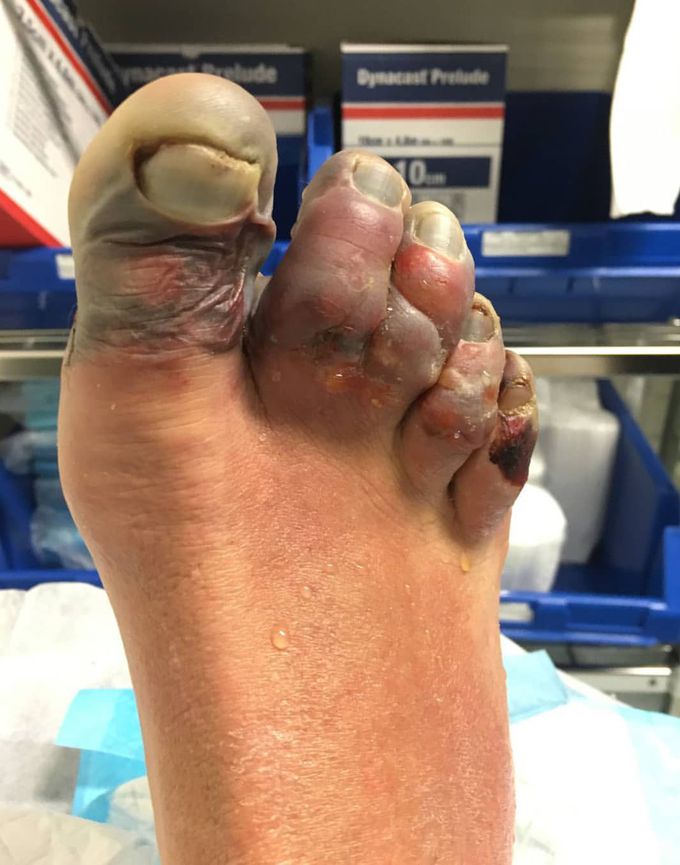


Frostbite
This photo shows frostbites of a climber who almost lost his toes while trying to save an injured teammate, climbing Mount Everest! Frostbite is an injury caused by freezing of the skin and underlying tissues. First your skin becomes very cold and red, then numb, hard and pale. The hands, feet, and face are most commonly affected. The underlying mechanism involves injury from ice crystals and blood clots in small blood vessels following thawing. Severity may be divided into superficial (1st and 2nd degree) or deep (3rd and 4th degree). The diagnosis of frostbite is usually made based on signs and symptoms, the appearance of the skin, and a review of recent activities in which you were exposed to cold. The doctor may conduct tests, such as an X-ray, a bone scan or an MRI. These can help determine the severity of the frostbite and check whether bone or muscle is damaged. Minor frostbite can be treated at home with basic first-aid measures. For all other frostbite, after appropriate first aid and assessment for hypothermia, treatment may involve rewarming, medications, wound care, surgery and various therapies, depending on the severity of your injury. Credit: Alan Arnette at alanarnette.com
Bad to him, but that is brave in the same time to help his mate, frostbite isn't a serious condition in its first 2 degrees, the 3rd and 4th are serious if left untreated, in addition to what you mentioned, the ear lope and the nose cartilage are also the most susceptible for such injury, thank you.
Phenoxybenzamine as a non selective irreversible alpha blocker can be used to treat initial stages
frostbite, the skin gets very cold, then numb, hard and pale.
Hemodynamic stimuli&nonhemodynamic stimuliEffects of sugar on teeth

